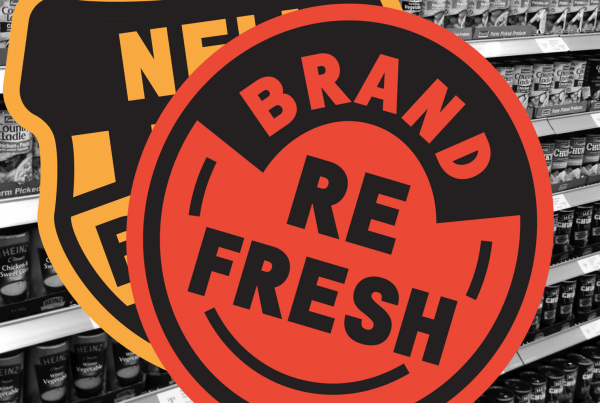Stuck for smart ideas on how to design for your finance, accounting, investment or insurance firm this new financial year? You probably know all the prime marketing tactics – having customer avatars, mailing lists, thank you notes and so on – and you may even be doing most of them.
But the thing is, great creative work doesn’t happen because a talented designer developed a more special colour scheme or illustration style. Or a wordsmith reached deeper into their thesaurus, to uncover some cleverer words. It also doesn’t happen because some industries have more ‘fun’ creative associations (usually B2C) than others (B2B).
Great creative work happens when there’s a sound strategy, and in this article we’re going to look at what makes some finance-sector websites, social media feeds, newsletters, videos or other marketing tools more effective than others.
Focusing on finance businesses (which here will include accounting, investment, superannuation and insurance), we’ll explore the strategies that most likely stands behind their world-class marketing efforts.
Of course if you don’t have a clear strategy, that doesn’t mean you shouldn’t start any of these activities. Far from it. Creating new materials is an opportunity to test new messages, surprise with new graphics, and collaborate with potential partners.
But you should consider these activities as delivering more than just a shiny new brochure or website. They’re opportunities to deepen what you stand for, and gradually weave more meaning into your brand assets as a whole. See the difference?
But first, a digression on the value of strategy
For businesses new to branding, the value of strategy can be hard to comprehend. What; spend money and time on all-team workshops that essentially deliver you a written document? A report explaining how your business is supposed to speak and behave? These conversations often start something like this:
Client: “Can you help us create more compelling brochures/digital ads/websites? Finance is so boring (laughs apologetically).”
Us: “Sure. Can we see your brand guidelines and strategy, or at least your vision, values and customer personas? We need to understand the current brand perceptions, value proposition and target audiences before we do anything.”
Client: “Erm we don’t have those. Can’t we just get started, without going that deep?”
Thing is, finance (and accounting, super and insurance) isn’t actually boring. An individual’s money and the associated freedom, security, status and enjoyments that come with it are the stuff of dreams. But achieving these objectives is complex. Any time a customer decides to invest large sums of money in one investment or super product, and not another, they have to weigh up a bunch of rules, legislations, calculators and reputational factors around that decision.
This is what gets tedious, especially when the finance firm tries to explain the technicality of this landscape (the ‘what’). That’s why heavy jargon and me-too promises dominate the sector (especially among older or mid-tier firms). That, and copycat logos, taglines, graphics and images. This behaviour is also what makes for boring branding.
Instead, finance firms should focus on ‘why’ a client needs this or ‘how’ their offer is different. That’s where strategy comes in. A good brand strategy will help give business owners or sales teams the words that their customers will find meaningful, and will give their marketing leads the foundation to create any creative work. We’ve written about brand strategy in depth before, so take a look here if you want to know how to create one.
Five great tactical examples, backed by strategy
Let’s take a look at the fabulous tactics used by finance firms around the world – and the strategies that probably make them what they are.
1. Distinctive brand identity
A strategic brand identity will communicate instantly to your clients whether you are the classic Mercedes or the edgy Tesla of your category. It’ll help your team know whether your humour should be dry or acerbic; your customer experience sedate or cheerful.
Strategy helps businesses clarify their purpose, and communicate this to their audiences using the right visual and verbal cues. We think the current generation of fintechs are pretty strong when it comes to brand identities grounded in solid strategies. Think Birchal, Raiz, Spaceship and others, which have clear strategies supported by distinctive branding.
Our brand identity, website and materials for respected Sydney firm WLM Financial is a vast departure from what their competitors are doing. That’s mainly because the company has innovated its services to such a high degree. Without those prior investments in technology, culture and systems, our rebrand could have been vastly different.
In more established firms, those strategies will shift every generation or so. Their creative will need to reflect that. Last year’s logo refresh for Australia’s Commonwealth Bank represented the bank’s increasingly optimistic and customer-centric operations, a contrast to its older associations of being a money-parking service.
2. Clear, compelling website and content
Form also follows function when it comes to website design, and so before we get to the juicy stuff let’s make sure you have the basics right.
Function-wise, we’re talking minimal jargon, no broken links, fast loading time and clear calls to action. Content-wise, it means that potential customers should understand what you offer, how the service works and where your pricing sits on the premium-to-affordable scale.
Appeal-wise, the icing on all this cake is when the design, language, graphics and other elements all bring your unique values to life – in a way that can’t be imitated by the competition. See point one above.
US financial advice platform Crediful has a blog that covers all aspects of personal consumer finance, from getting the right car loan to starting in shares and paying down debt. Here in Australia, equity crowdfunding platform Birchal has an original website and content because its business model, approach and services are so unique. In both, the website form follows the brand’s strategic function.
3. Location-based advertising
Connecting with customers in a particular geographical location hasn’t gone out of date, when you look at the value that speaking gigs, client cocktails or local chamber of commerce events still have (watch these resurge once Covid lockdowns ease up).
In 2017 Virgin Money in the UK opened a massive three-floor Money Lounge (OK, so this is closed temporarily because of Covid). They allowed anyone to come in and relax on the lounges while browsing service options. For Virgin Money customers, Money Lounge even offered exclusive event spaces including a bowling alley and games area, and a café offering refreshments, Wi-fi and charging stations.
In Canada, Vanguard’s mobile coffee truck initiative, the At Cost Café, served coffees that cost one-fifth the price of normal coffees (just like their fees). The initiative demonstrated Vanguard’s commitment to prioritising investment returns for clients, rather than to a complex web of outside owners (which it doesn’t have).
4. Great social media content
Everyone knows video is the flavour of the decade. According to Forbes, it will account for 82 per cent of content on the internet by 2022. And yes, we know you already have a nice sincere corporate video, showing all the smiling faces and chic lounges at your business.
So let’s talk about actually bringing your values to life, showing the issues behind what you do, or connecting with indirect issues that impact your customers. Of course that begins by really understanding those customers and their values. Are you targeting older customers who already have set notions about this, mixed with their own bag of personal experiences? Or younger customers either overwhelmed by this topic, or a little cavalier about it?
In the US, Allstate Insurance has an absolutely jam-packed YouTube channel with content on anything from changing a tyre (so you don’t have to waste an insurance claim, presumably) to tips for families on road trips. Importantly, its content also addresses more serious matters such as civil rights, through its ongoing campaigns for Black History Month, and has a whole section of content devoted to financial abuse. We could go on and on – so just take a look. The most important thing about all this content is that it wasn’t hacked together to tick any boxes– it goes back to their deepest brand values.
The UK’s NatWest has a super informative YouTube channel with everything from tips to getting started in investment to navigating their platforms, and interviews with experts on the current state of the economy.
For special campaigns, remember you can have a lot more fun. We saw this with E-Trade’s hilarious Superbowl ad of 2018, which parodied seniors who didn’t plan their retirement early enough. Geico is another well-documented example, having comical brand ambassadors that range from a CGI lizard to a kooky telesales rep. It’s all part of their brand personality, which is unique to them – as it should be. As Oscar Wilde once said, ‘Be yourself; everyone else is already taken.’
5. Community initiatives and storytelling
Overall, we feel that established Australian finance firms are still conservative compared to their overseas counterparts. (The fintechs are another story). Sure, there are the consumer insurance ads that depict endless fails (of the Funniest Home Video variety), and there’s Budget Direct’s Captain Risky – so popular it even has its own website.
However, community initiatives are delivering fantastic profile boosts to those firms out there that might not have an out-there brand personality, but do have a genuine commitment to certain values shared by their customers. Think of IMB Bank’s recent Future Heroes campaign, supporting young changemakers; or Heritage Bank’s various community initiatives. Obviously, the bigger the organisation the bigger (and broader) these budgets and initiatives get, as we can see from the massive sport, arts and community sponsorships offered by Australia’s top-tier finance firms. However, even at a small and local scale, their ripples are substantial.
As Australia collectively yawns its way into yet another month of Covid lockdowns, no doubt there are business owners out there feeling the pinch, feeling uncertain, feeling cut off from their clients. But as we saw from some recent good-news stories – Brisbane slated to host the 2032 Olympics; more people worldwide vaccinated; some countries starting to cautiously lift restrictions – we know life will eventually get back to normal. When it does, you’ll have some compelling new messages to share.



